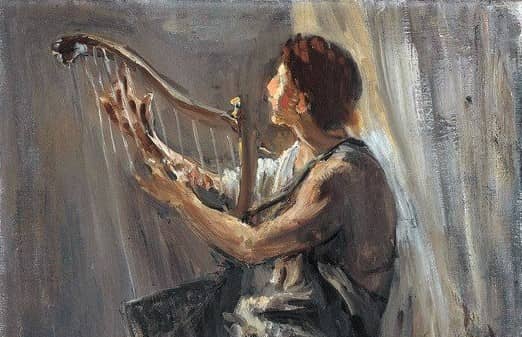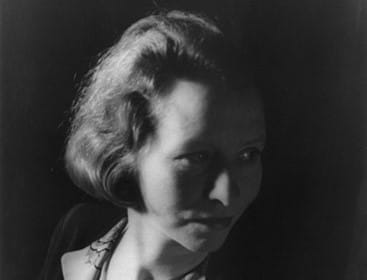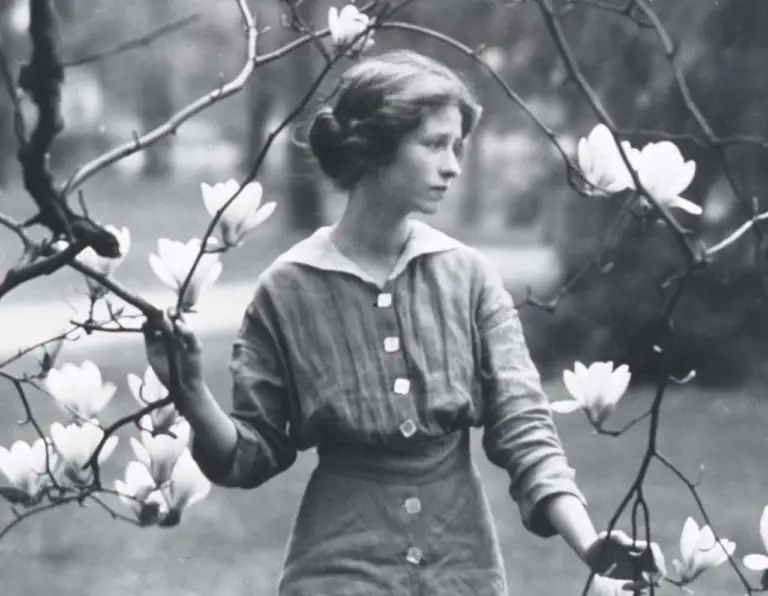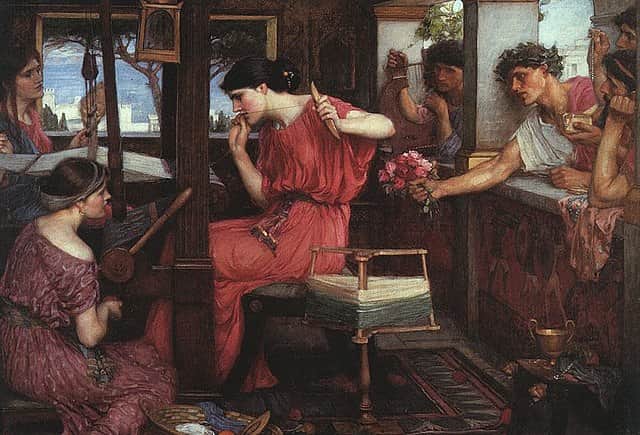Spring by Edna St. Vincent Millay
Edna St. Vincent Millay’s free-verse poem “Spring” is seemingly about the coming of April. Beneath, it captures the poet’s distaste for the season. This poem was written after Millay’s “intense affair” with American poet Arthur Davison Ficke ended abruptly. Thus, it captures the bitter feelings of Millay’s heart. In reality, it is a reflective piece on the spring season and how the speaker feels about it. When the month of April arrives with all its beauty and colors, the speaker thinks people will soon forget about it. Not only that, but they will also forget about those who lost their lives.
- Read the full text of “Spring” below:
Spring by Edna St. Vincent Millay To what purpose, April, do you return again? Beauty is not enough. You can no longer quiet me with the redness Of little leaves opening stickily. I know what I know. The sun is hot on my neck as I observe The spikes of the crocus. The smell of the earth is good. It is apparent that there is no death. But what does that signify? Not only under ground are the brains of men Eaten by maggots. Life in itself Is nothing, An empty cup, a flight of uncarpeted stairs. It is not enough that yearly, down this hill, April Comes like an idiot, babbling and strewing flowers. - from Second April (1921)
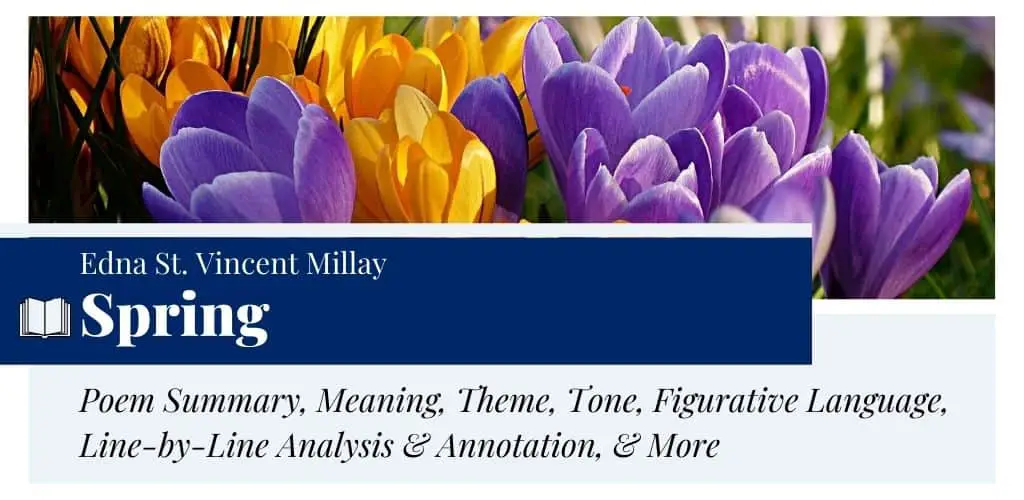
Summary
This piece, “Spring” by Edna St. Vincent Millay, is about the coming of the second April after World War I (1914-1918). The poet describes how this season is beautiful as usual as the colors keep changing and the scent of the earth is good. There is no evidence of death in the air, and no remnant of the war lingers around anymore. However, the speaker finds no real meaning in life due to her aching mental state and the horrors of the First World War. Life seems to be “a flight of uncarpeted stairs” and goes downhill, especially when spring arrives with its beauty that makes people forget all the harshness of reality.
Meaning
In this poem, Millay observes the colors of nature that keep changing in April. She witnesses nature’s rapture unravel in front of her eyes, but she somehow feels frustrated. There is anger and agony in her heart for all the lives lost in the Great War. Their names would be forgotten soon because of the coming of spring, the season of rebirth and renewal. The poet uses phrases like “Comes like an idiot, babbling and strewing flowers”—to describe her feelings towards the season. She also concludes how life in itself has no meaning because a person could be brave and strong, fight in a war, but soon be forgotten as the world moves on.
Structure & Form
The poem is written in the free-verse form. It has no set rhyme scheme or metrical pattern. There are a total of 18 lines, none of which are distributed in separate stanzas. Millay uses end-stopped lines in order to conclude the sense of each unit and continue the sense in the following one. Alongside that, the length of lines is irregular; for instance, the length starts to decrease from line 11 to 14, and line 17 has only one word (two syllables). Millay writes the poem from the first-person point of view. Her poetic persona addresses the month of “April” by employing human attributes to the idea. The tone of the speaker is regretful and vexed.
Poetic Devices & Figurative Language
Millay makes use of figurative language in order to make her ideas concerning spring more appealing to readers. The figurative devices used in the poem include:
- Rhetorical Question: The poem begins with a rhetorical question, “To what purpose, April, do you return again?” It again occurs in line 10, “But what does that signify?” – to create an atmosphere of hopelessness and regret.
- Simile: It occurs in the lines, “April/ Comes like an idiot, babbling and strewing flowers.” Here, April is compared to a mindless fool.
- Metaphor: The poet refers to life as “As an empty cup” and “a flight of uncarpeted stairs,” – which describes the futility of human life. Unlike carpeted stairs, life is filled with hardships and heartaches. Human life is not all about the flowery spring, but there are phases of harsh winters too.
- Symbolism: Spring is often used to refer to rebirth, renewal, and ecstasy – all of the things that are the antithesis of death. In this poem, Millay creates this juxtaposed image of rebirth and death to show how people move on from the past, and those who lost their lives are forgotten.
- Enjambment: It occurs in lines 3-4, “You can no longer quiet me with the redness/ Of little leaves opening stickily,” and lines 6-7, “The sun is hot on my neck as I observe/ The spikes of the crocus.”
- Alliteration: It occurs in “little leaves,” “that there,” “does that,” “in itself/ Is,” “down this,” etc.
- Assonance: There is assonance of the “i” sound in the line, “Of little leaves opening stickily.”
- Consonance: It is used in the following phrases, “purpose, April,” “that there is no death,” “An empty cup, a flight of uncarpeted stairs,” etc.
- Anaphora: It occurs in lines 6-8. These lines begin with the same word, “The.” It is meant for the sake of emphasis.
Line-by-Line Analysis & Annotation
Lines 1-5
To what purpose, April, do you return again?
Beauty is not enough.
You can no longer quiet me with the redness
Of little leaves opening stickily.
I know what I know.
In the first five lines, Millay’s lyrical voice questions the month of April by using an apostrophe. She asks why it returns each year or what its sole purpose is. The speaker implicitly acknowledges the beauty of spring—the redness of tiny leaves and blooming flowers. However, she says that the beauty of spring alone is not enough to make all her miseries go away. The tone of the speaker is vexed and disillusioned, as she cannot feel the same for the coming of spring. It reminds her of the past memories that, in return, pain her deeply. Her frustration is reflected in the line, “I know what I know.”
Lines 6-10
The sun is hot on my neck as I observe
The spikes of the crocus.
The smell of the earth is good.
It is apparent that there is no death.
But what does that signify?
In the next few lines, the speaker describes how she can feel the warmth of the sun on her skin as she observes the “spikes of the crocus.” Here, the phrase “spikes of the crocus” symbolizes the thorns of love that pierce one deep at the end of a relationship. Furthermore, the speaker expresses how she can smell the freshness of the earth beneath. Here, Millay uses olfactory imagery.
According to the speaker, the freshness beneath one’s feet during spring is misleading. It makes one feel there is no death at all—how such eternal beauty of life can ever fade. This line also echoes the deaths in World War that are no longer evident. Then, the poet ponders what nature actually tries to hide beneath the veil of beauteous spring – “But what does that signify?”
Lines 11-18
Not only under ground are the brains of men
Eaten by maggots.
Life in itself
Is nothing,
An empty cup, a flight of uncarpeted stairs.
It is not enough that yearly, down this hill,
April
Comes like an idiot, babbling and strewing flowers.
In the last lines, Millay’s speaker recalls how the bodies of the war victims are still buried underground. She paints a disturbing image in the line, “Eaten by maggots.” This line creates a contrast to the spring scenery described before. It becomes clear what nature hides behind her veil of rebirth and rejuvenation. This striking culmination of human life makes her think that life has no meaning at all. It is like an “empty cup” that we try to fill throughout our lives with the hope that it will get filled one day. But, the reality is it never gets even filled.
Furthermore, the speaker compares life to an uncarpeted flight of stairs. We climb the stairs with our burdens. While waiting on a flight, we think we will reach there and finally rest one day. It never happens to be true. On top of that, our feet get bruised for climbing those uncarpeted, rough stairs. So, why do we live if life is nothing but a series of futile projections?
In the end, the speaker says that the beauty of Spring, which comes each year in April, is not enough for her to move on from the death and grieving. Though it comes each year, babbling and strewing flowers all over the earth, it cannot inspire the speaker anymore. The overall tone of the poem is regretful and cynical.
Theme
In “Spring,” Millay subtly expresses how nature can affect or inspire the human mind. She acknowledges how the coming of spring makes people forget about the past. Spring symbolizes rebirth, renewal, and joy – all of these attributes of spring are given by humans themselves. Millay describes how the redness of new leaves and the freshness of flowers give people a sense of hope and rebirth, which they lose during desperate times.
The poet, however, is frustrated by the renewed hope in spring that eventually implores her to forget about the horrible memories of death and war. According to her, spring, a symbol of new life, is nothing but a whitewash to the bleak tragedies. She realizes that there is no meaning to life and concludes the poem on a frustrating note.
Tone
The tone of the poem is regretful, pessimistic, and frustrated. In this poem, Millay expresses her frustration after recounting past events. It concerns people moving on from loss, tragedy, and death. Thus, she hates the coming of spring which calls for rebirth and renewal, instead of looking back at what one’s really lost. The events that occurred before, include the First World War and the poet’s separation from her lover. Both these events had a lasting impact on her mind. Her frustration and agony are reflected throughout the poem. She is cynical about the vitality of life after witnessing what happened before.
Historical Context
Edna St. Vincent Millay was an American poet, regarded as “the herald of the New Woman.” She won the Pulitzer prize in 1923 for the poem “The Ballad of the Harp-Weaver.” Besides, Millay was a socially and politically active poet. She promoted her individualism, inspiring an entire generation. She is best known for her lyric “Renascence,” and her notable poetry collections include A Few Figs From Thistles, Second April, and The Harp-Weaver, and Other Poems.
Her poem “Spring” first appeared in Second April, published in 1921. In February 1918, Millay met with poet Arthur Davison Ficke. Eventually, they fell in love and had a brief affair that affected them deeply. They wrote sonnets idealizing their love. Millay’s impassioned poems were published in the elegiac collection, Second April, which contrasts the rapture of beauty with the certainty of its passing. This contrast is evident in “Spring” as well.
Questions & Answers
“Spring” by Edna St. Vincent Millay is about the coming of spring and how it makes people forget their harsh realities. Overall, through this poem, Millay talks about the inevitability of the passing of spring and how the season fails to inspire her anymore.
The tone of “Spring,” one of the best-known poems of Edna St. Vincent Millay, is frustrated, regretful, and pessimistic. It reflects in the following lines, “Beauty is not enough” and “Life is itself/ Is nothing.”
The poem is written in the free-verse form, without any specific rhyme scheme or meter. Millay addresses this piece to an abstract idea that is the month of April or spring from the first-person point of view.
This piece taps on a number of themes that include the transience of spring, futility of life, inevitability of death, and heartache.
The poem is based on the sufferings of humankind and the poet’s separation from her lover. In this poem, Millay describes how it is not fair to forget our past with time and just because of the beauty of spring.
It is a rhetorical question that is posed directly at the abstract idea, “April.” Millay uses an apostrophe in order to infuse life into this idea. Through this line, the poet tries to mean that the season of spring comes purposelessly without evoking any hope in her mind.
Similar Poems about Heartache & Nature
- “Song for a Dark Girl” by Langston Hughes — This song captures the pain of a black girl whose lover was beaten to death.
- “The Heart asks Pleasure—first—” by Emily Dickinson — This poem describes what a person needs the most, down to the least for relief.
- “The Nightingale” by Sir Philip Sidney — In this poem, the speaker’s pain deepens as he listens to a nightingale’s song in spring.
- “Monna Innominata: I wish I could remember that first day” by Christina Rossetti — In this poem, the speaker reminiscences her first love and her regrets revolving around it.
External Resources
- Check out Rapture and Melancholy: The Diaries of Edna St. Vincent Millay — This collection of Millay’s diaries explore the journey of a small-town girl from obscurity to world fame.
- Full text of Second April — Explore other poems published in this collection.
- About Edna St. Vincent Millay — Read about the poet’s life and her relationship with Arthur Davison Ficke.
- Life & Works of Edna St. Vincent Millay — Learn more about the poet’s life and works.

